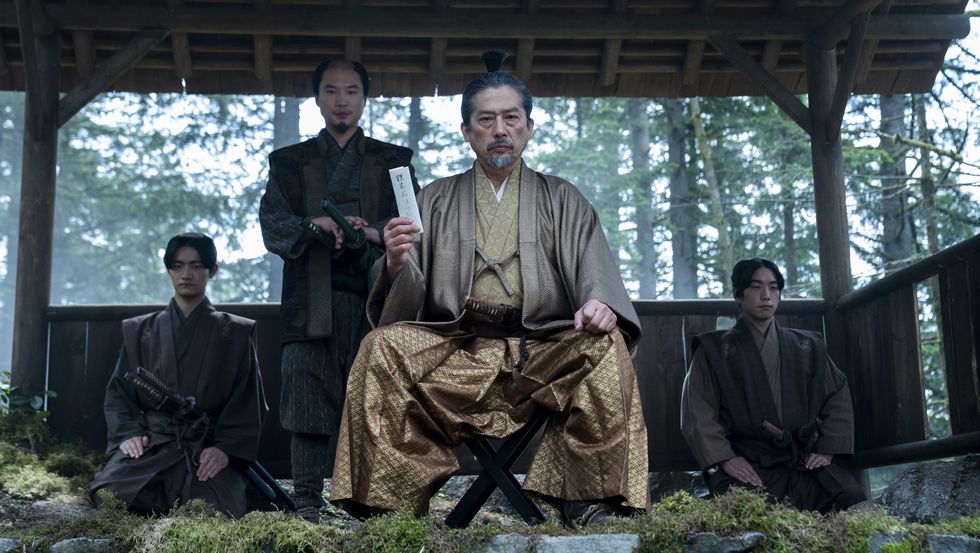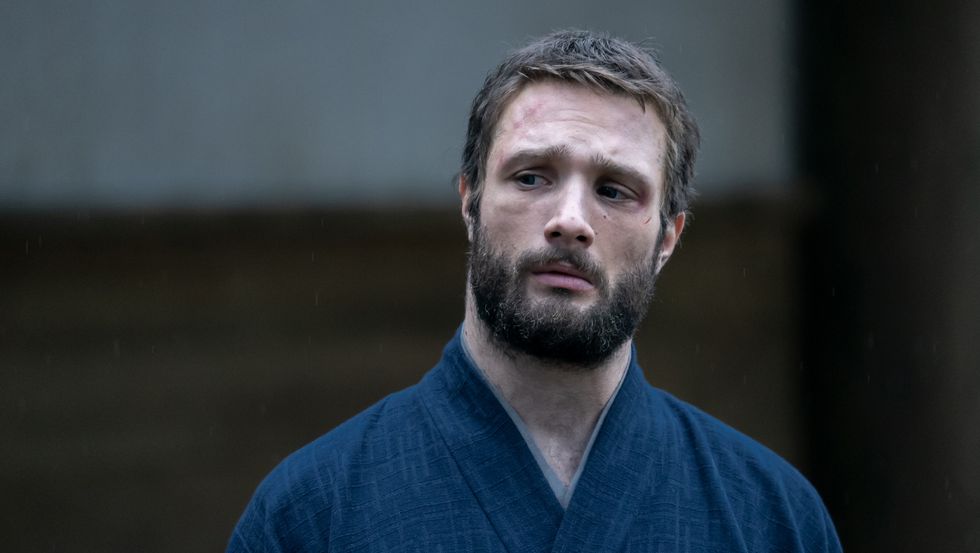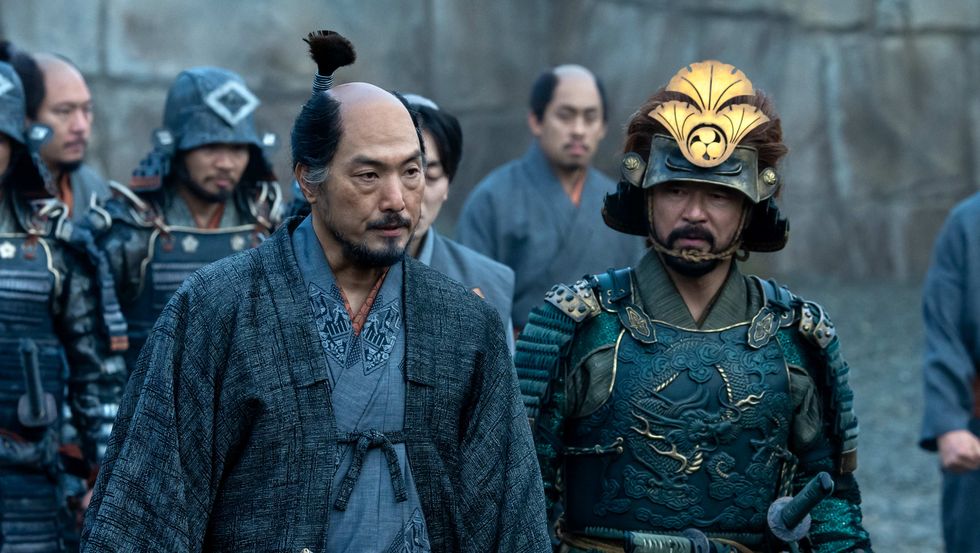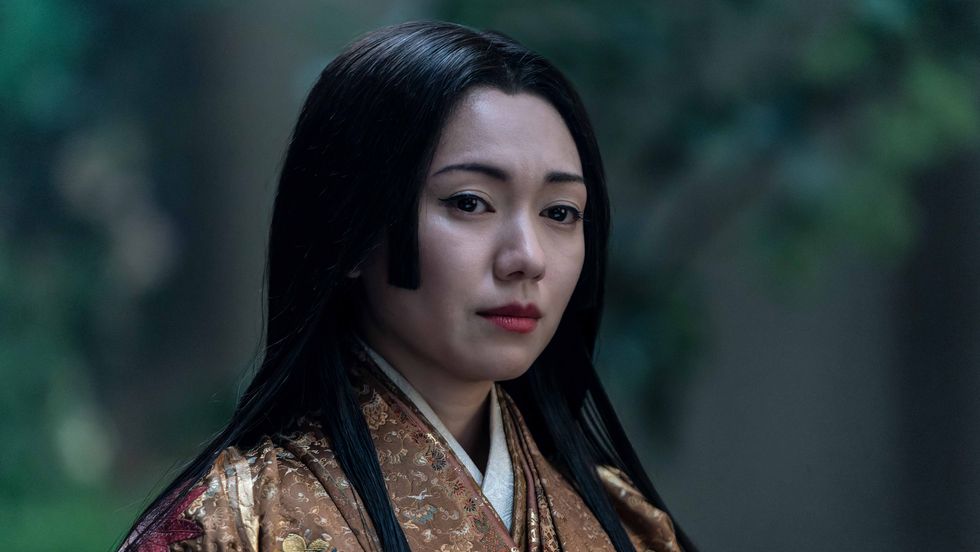Shōgun may not return for season 2, but the story of the Tokugawa shogunate goes on.
By the time Shōgun’s conflict ends, there is no violence. The FX drama, adapted from James Clavell’s 1975 novel of the same name, takes place during a power struggle in feudal Japan right before one of the bloodiest battles in the nation’s history. Unlike the real-life events that the ten-episode drama is based on, Shōgun chose a different path forward.
At the end of episode 10, Yoshii Toranaga (Hiroyuki Sanada) envisions the culmination of his master plan to become the de facto ruler of Japan. With his political rivals weakened, Toranaga remains the only lord with enough support to rebuild Japan. At the upcoming Battle of Sekigahara, the conflict will not last long. Though a battle does occur, Toranaga believes he will win swiftly and without much bloodshed.
In Japanese history, the Battle of Sekigahara lasted only six hours. Many powerful lords switched to Toranaga’s side and helped him win the fight, but the transition of power certainly did not occur as seamlessly as the lord imagines on Shōgun. The real battle was one of the largest and most important conflicts in Japanese history, resulting in the loss of around twelve thousand to forty thousand men. Toranaga’s real-life counterpart, Tokugawa Ieyasu, was still victorious. He was officially named shōgun by Emperor Go-Yōzei—yes, there was an emperor as well—and his family ruled the country for roughly the next 260 years.
It seems increasingly likely that Shōgun’s season finale marks the end of the series, but most of the characters’ real-life counterparts led exciting lives past the Battle of Sekigahara. Below, find out what lay in store for Shōgun’s survivors.

FX
Hiroyuki Sanada as Yoshii Toranaga.
Yoshii Toranaga
Tokugawa Ieyasu, Toranaga’s real-life counterpart, is one of the most important figures in Japanese history. Known as one of the great unifiers of Japan, the Tokugawa shogunate established peace by ending the nation’s decades of civil war. He consolidated his power and created a unified feudal system in just five years’ time following his appointment. Shortly after, he began a period of semi-retirement and trained his son, Tokugawa Hidetada, to rule in his place. After turning sixty-five, he spent the rest of his life supervising the construction of Edo Castle—now the location of Japan’s Imperial Palace, which serves as the main residence of the Emperor.

FX
Cosmo Jarvis as John Blackthorne.
John Blackthorne
Much like in Shōgun’s finale, John Blackthorne’s (Cosmo Jarvis) real-life counterpart, William Adams, was friends with Tokugawa long beyond the events of the series. Tokugawa was staunchly anti-Christian during his reign, and Adams frequently aided him in negotiating trade relations with Europe. According to Samurai William: the Englishman Who Opened Japan, by British historian Giles Milton, the Spanish and the Portuguese continued to view Adams as an obstacle to their mission of further establishing the Christian church in Japan. That all ended in 1614, when Tokugawa signed the Christian Expulsion Edict and banished the practice of all foreign missionaries.
Still, Tokugawa and Adams maintained a close connection until Tokugawa’s death. The latter oversaw the construction of the first Western ships in Japan and is recognized as one of the most influential foreigners in Japan during the seventeenth century. Though he was eventually granted permission to return to England, he chose to stay. As Toranaga says in the final episode, “I don’t think it’s his fate to ever leave Japan.”

FX
Takehiro Hira as Ishido Kazunari.
Ishido
Depicted in the novel but not on the show, Toranaga captures Ishido (Takehiro Hira) at the conclusion of the Battle of Sekigahara. Three years later, Toranaga buries him in the ground (up to his neck at least) and leaves him there to die. In Japanese history, Ishido’s counterpart, Ishida Mitsunari, was beheaded in Kyoto. In most accounts of Ishida’s past, he has been portrayed as a generally unfit bureaucrat who panicked and lost the battle. His decision to hold the royal families of Osaka hostage—which resulted in the death of Mariko’s (Anna Sawai) counterpart, Akechi Tama—greatly turned the tide of the war.
Recent depictions, such as on Shōgun, give Ishida a bit more credit. The Council leader began the Battle of Sekigahara with roughly double the number of men on Tokugawa’s side. Had he played his cards better leading up to the conflict, Ishido was primed to win the battle before enough lords switched sides to make his army the minority.

FX
Fumi Nikaido as Lady Ochiba.
The Siege of Osaka
In 1614, Toyotomi Hideyori (the Taikō’s son and the rightful heir on Shōgun) officially came of age. Finally a young lord at Osaka Castle, he gained supporters claiming that he was the rightful heir. Whether he sought to accrue power or not, his new position threatened the new shogunate. Tokugawa vowed to siege Osaka Castle if the supporters refused to back down. He later signed an armistice after placing Hideyori’s mother, Yodo-dono—Lady Ochiba (Fumi Nikaido) on Shōgun—in the direct line of cannon fire.
Hosokawa Tadaoki, who serves as a loose inspiration for Buntaro on Shōgun, joined Tokugawa in both the Battle of Sekigahara and the Siege of Osaka following his wife’s death. He also attacked Osaka Castle a second time in 1615, along with 155,000 of Tokugawa’s soldiers after Hideyori refused to vacate power. Tokugawa’s forces killed both Hideyori and Yodo-dono in the siege, ending their threat to his reign.
With generational power secured, Tokugawa died just one year later, at the age of seventy-three. His family controlled Japan until 1868, when imperial rule was reestablished during the Meiji Restoration. While audiences likely won’t see future seasons of Shōgun and therefore any of these events portrayed, Tokugawa completed his mission to bring peace to Japan.





